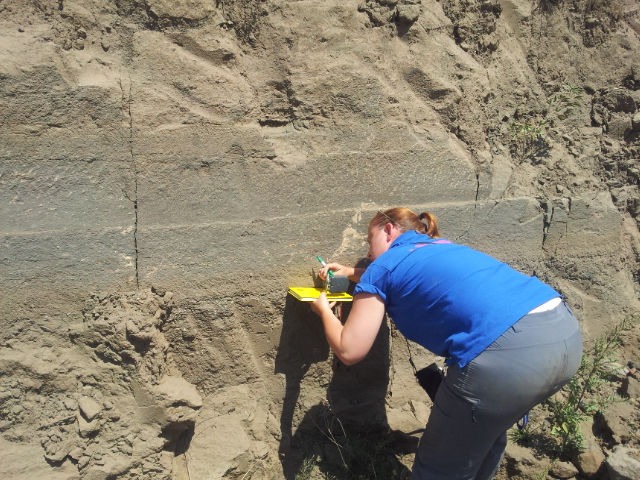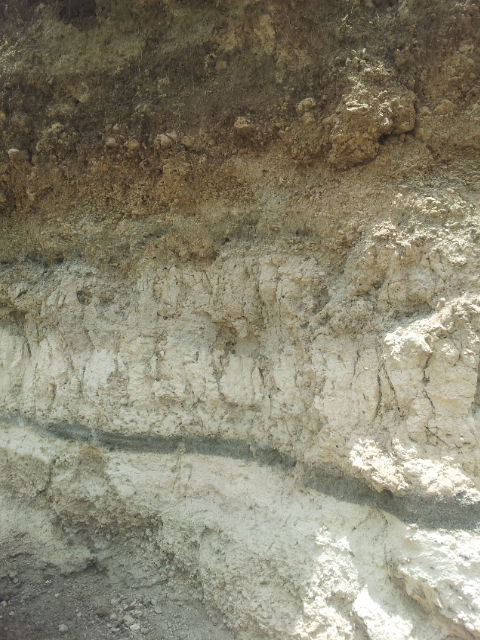Day 8 - Playing detectives
- jennynewall
- Sep 12, 2014
- 3 min read
With structural mapping of the caldera walls ruled out of the equation we have decided to do some basic mapping of the different rocks in the caldera. By producing a map of the rocks at the surface, and looking at how the different units interact – the nature of the boundaries – Helen can then produce cross sections projecting what we have observed at the surface deep underground. These cross sections will be invaluable when developing the model of subsurface heat, gas and water flow. Geology is often a bit of a detective’s game; we attempt to understand what has happened in the past based on the evidence which is left behind – in our case this is rocks. More often than not the evidence within the rocks can be quite elusive. In my opinion sedimentary rocks are the easiest to interpret as so much information can be extracted from them and they tend to be the least elusive. Our first location of the day was just this - a section of lake (or lacustrine deposits as they are termed in geology) in the north-east of the caldera. The rock here is a lithic siltstone (a very fine grained rock containing many small rock fragments) and is the only reported sedimentary rock within the caldera. It was formed in a lake which existed here between the first stage of the caldera collapse (~29,000 years ago) and a secondary collapse (~16,000 years ago). We believe the lake existed between these times as there were tuff deposits (which are associated with caldera collapse) both above and below the sedimentary rocks.

Helen taking a bedding measurement on the siltstone.
The tuff overlying the siltstone has shows no evidence of having been deposited in water, we can conclude from this that the lake had dried up before the secondary collapse. The bedding (layering) of the siltstone is tilted slightly and, as we discovered walking along the section, the direction of this tilting varies producing very gentle folds. Folding usually occurs in a compressional environment (where the rocks are being pushed together), but we know that there has been no such compression in this area. So we think that this very gentle folding was formed by the pressure of loading material (possibly just the tuff) above the siltstone while it was still relatively soft and not quite lithified. Lithification is when loose sediments are turned into a rock, usually under the pressure of more sediments or water above.
As we were studying the siltstone and collecting bedding and fracture measurements on it we heard a mockingbird. Having learnt that they get this name from copying tunes they hear. I thought I would test this and whistle the mockingjay tune from ‘The Hunger Games’. I was very impressed that the bird responded with an attempt of it, though it wasn’t quite there. My mission while here… get a mockingbird to sing the hunger games tune!
I mentioned earlier that the siltstone is the only reported sedimentary rock in the caldera. Well we think we may have come across another…. which has been discovered already as it is currently being quarried and used to make the cement that is put down the wells to ‘pack’ the casing.

The other sedimentary rock we found today. A pale whitish, chalk-like rock either side of the grey tephra layer. It is definitely not chalk - we tested this with acid. Potentially loess?
I think it might be loess – an aeolian clay. It is certainly a clay as it is very fine grained. Aeolian simply means it was carried and deposited by the wind. It was a chalky white-yellow colour and has all the characteristics of a loess. The only thing that stalls this interpretation is that a loess is mostly associated with glaciers - the clay having a glacial origin- which is most definitely not the case here! Any thoughts on this are welcome. Within the loess is a thin (~5cm thick) grey layer. This layer is an ash-fallout, and we call this tephra. Above the loess is a series of tuff (pyroclastic fallout) deposits. The tuff varies in thickness and clast size, representing changes in the energy of the pyroclastic eruption. It was a very hot, and humid day today, and both Helen and I were finding it slightly too hot. Thankfully we had done everything we set out to do by 2.30pm and so we had an early finish. Lala salama (goodnight)


Comments